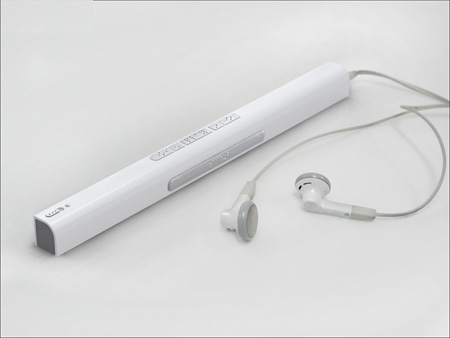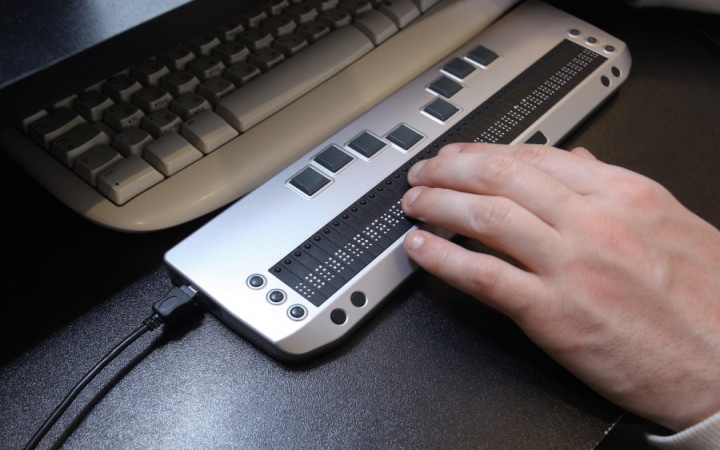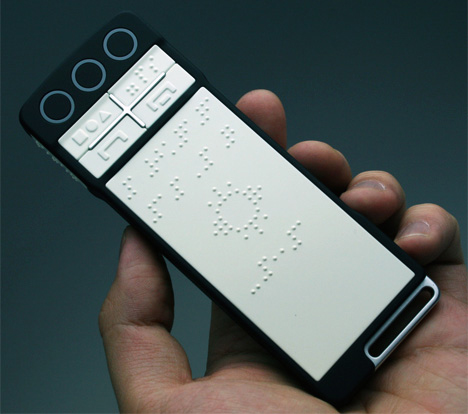Speech-to-Text Devices for Low Vision: Narrowing the Communication Gap
Speech-to-Text Devices for Low Vision: Narrowing the Communication Gap
Blog Article
Discover Ingenious Devices Developed for the Visually Damaged
The development of innovative devices for the visually damaged stands for a significant advancement in accessibility and self-reliance. Technologies such as clever glasses with AI capacities and mobile applications made to supply auditory summaries are reshaping daily experiences for customers.
Smart Glasses for Navigating

Smart glasses developed for navigation are changing the method visually impaired people engage with their environment. These advanced tools use a combination of cam modern technology, synthetic knowledge, and auditory feedback to supply real-time information concerning surroundings. By utilizing obstacle discovery systems, clever glasses can alert customers to potential dangers, enabling safer flexibility in both strange and acquainted settings.
The integration of GPS technology additionally enhances navigation capacities, permitting individuals to get acoustic instructions as they move. This hands-free method not only promotes independence however additionally equips aesthetically impaired people to navigate urban landscapes with increased confidence. Furthermore, numerous wise glasses are furnished with attributes that determine landmarks and street indications, supplying contextual details that boosts the individual experience.
Moreover, the advancement of these devices is constantly progressing, with companies functioning to boost the precision of item recognition and increase the array of navigational features. As clever glasses become a lot more economical and easily accessible, they hold the potential to dramatically change everyday life for visually damaged individuals. Ultimately, these cutting-edge devices represent an essential action towards inclusivity, offering boosted wheelchair and a higher feeling of freedom for individuals browsing the world around them.

Mobile Apps for Daily Living
Exactly how can mobile applications enhance the lives of visually damaged individuals? Mobile apps are transforming the method aesthetically damaged customers navigate their settings, handle everyday jobs, and accessibility info. These applications give crucial support via numerous performances, fostering freedom and boosting high quality of life.
A number of cutting-edge mobile applications are made specifically for daily living. For instance, applications like Be My Eyes attach aesthetically impaired customers with sighted volunteers using video clip telephone calls, permitting them to receive real-time assistance with tasks such as reviewing tags or navigating strange rooms. In A Similar Way, Seeing AI, created by Microsoft, makes use of expert system to describe surroundings, reviewed text, and determine objects, successfully transforming a mobile phone into an effective tool for everyday assistance.
Furthermore, navigation applications tailored for the aesthetically impaired, such as Aira and BlindSquare, provide audio-based directions and ecological details, allowing customers to traverse their surroundings securely and with confidence. Past navigation and immediate assistance, mobile apps also support organization and job management, with attributes that assist users set reminders, create order of business, and track visits. In recap, mobile applications serve as important sources, empowering visually impaired people to lead even more independent and meeting lives.
Wearable Technologies for Aid
Empowerment via modern technology is increasingly obvious in the realm of wearable tools made to assist visually impaired people. These innovative tools integrate perfectly right into life, enhancing navigating and supplying crucial responses to users. For instance, smart glasses geared up with cams can check out and acknowledge faces message out loud, enabling users to interact more confidently in social and expert settings.
An additional notable development is the usage of haptic comments systems in wearable devices. These systems utilize vibrations or various other tactile signals to communicate information concerning the customer's environment, such as obstacles or modifications in terrain, enhancing flexibility and safety and security. Wearable innovations likewise hour glasses consist of wristbands that attach to smart devices, notifying individuals to notices through subtle vibrations, thus enhancing connectivity without dependence on visual signs.
As these innovations check here remain to develop, they are not just enhancing independence for aesthetically damaged individuals however additionally fostering a higher sense of addition in society. By bridging the space in between difficulties faced in day-to-day living and the potential for autonomy, wearable modern technologies function as critical devices in the pursuit for equality and empowerment for those with visual problems.
Sound Description Devices
Audio description tools play an important duty in boosting ease of access for visually damaged people, supplying them with the ability to involve with aesthetic media. Screen readers for the blind. These tools supply narrated summaries of crucial aesthetic elements in films, television shows, and live efficiencies, guaranteeing that individuals can totally understand the context and feelings shared through visuals
Sound summary can be integrated into different systems, consisting of streaming solutions, cinema screenings, and live cinema. Many preferred streaming solutions now consist of audio summary as an availability attribute, allowing audiences to choose it quickly. Along with conventional media, specialized applications also exist, offering audio summaries for art events, museums, and other social occasions.
The effectiveness of audio description hinges on the skill of the narrators, that need to communicate visual information succinctly without detracting from the original audio. Developments in this field are also paving the way for more customized experiences, where customers can adjust the level of information and find out this here pacing according to their choices.
Braille Innovations and Gadgets
Braille innovations and devices have significantly transformed the way visually impaired people connect with message and details. Modern innovations have actually led to the development of versatile devices that improve literacy and freedom among users.
Furthermore, mobile Braille notetakers incorporate traditional Braille input with modern functionalities, helping with note-taking, scheduling, and file modifying on the go. Mobility aids for visually impaired users. These portable gadgets frequently include text-to-speech capabilities, linking the void between Braille and auditory details
Furthermore, innovative Braille printers have actually arised, allowing customers to generate Braille labels, files, and academic products effectively. This accessibility cultivates higher participation in educational and specialist environments, inevitably promoting inclusivity.
In addition, research study right into smart Braille innovations remains to expand. Gadgets that incorporate expert system are being discovered to supply real-time navigating support and contextual details, improving the customer experience in diverse settings. On the whole, these developments mirror a commitment to equipping aesthetically impaired people via innovation, guaranteeing they can conveniently gain access to and involve with the world around them.

Verdict
The innovation of ingenious tools for the visually damaged dramatically boosts freedom and lifestyle. Smart glasses, mobile applications, wearable modern technologies, audio description tools, and Braille developments collectively encourage people by giving crucial navigating help, environmental awareness, and boosted reading experiences. These modern technologies not just foster better addition but additionally promote freedom in everyday activities, inevitably adding to a more equitable and accessible culture for visually damaged individuals. Proceeded advancement in this field holds pledge for further improvements.
As smart glasses come to be much more cost effective and accessible, they hold the prospective to dramatically transform day-to-day life for visually impaired customers. Mobile apps are reinventing the way visually impaired customers navigate their atmospheres, take care of daily tasks, and gain access to information. Apps like Be My Eyes link aesthetically impaired users with sighted volunteers using video telephone calls, allowing them to receive real-time aid with jobs such as checking out labels or browsing unknown spaces.Furthermore, navigation apps tailored for the visually impaired, such as Aira and BlindSquare, use audio-based instructions and ecological details, making it possible for users to traverse their surroundings safely and confidently.The development of ingenious devices for the aesthetically damaged dramatically boosts self-reliance and quality of life.
Report this page